I went through my Reid garden photos again, looking for clear examples of the subtly layered plant communities that rose up around my feet as I followed the paths, scanning the garden like a hungry predator, looking down then quickly back up to trace the changing treeline, the alternating pools of light then shade, the understory of shrubs surrounded by blankets of ground-hugging sedums, bergenias, hardy begonias, grasses. Immersed in the garden, it feels as though the enfolding landscape continually builds up then releases great dramatic tension, holding charged breaths filled to bursting, then exhaling in a pool of sunlight, or a vista over fields and distant stands of trees. Heady stuff.
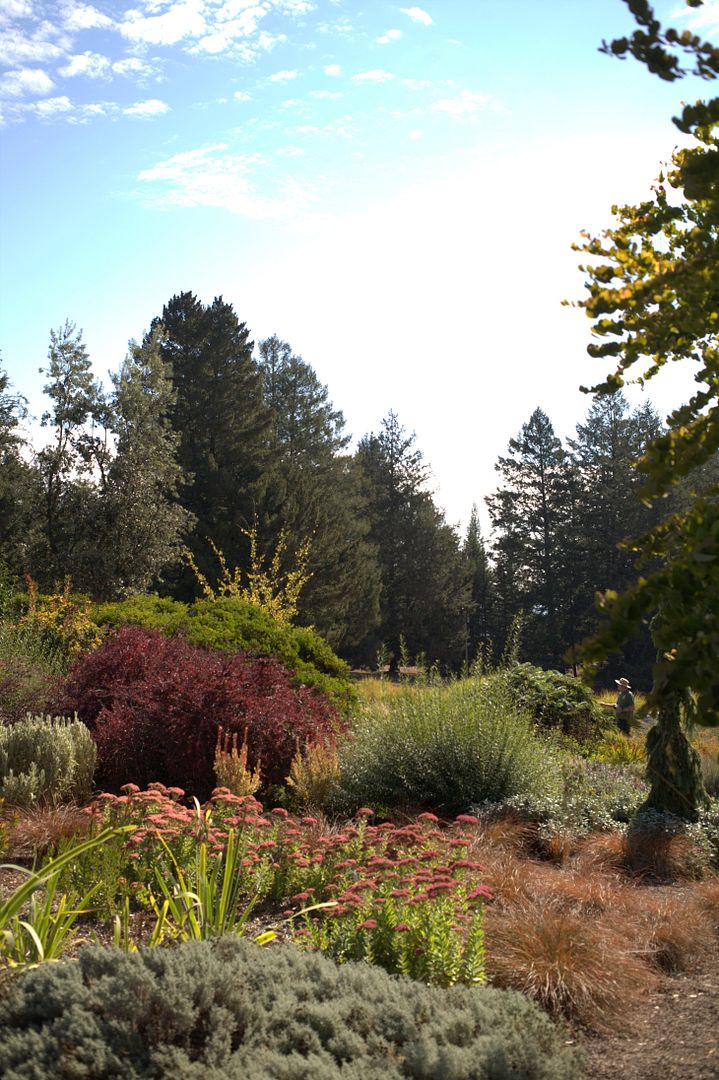
Filling over two acres, plants are allowed to contribute the full breadth of their character and are seen in all their dimensions.
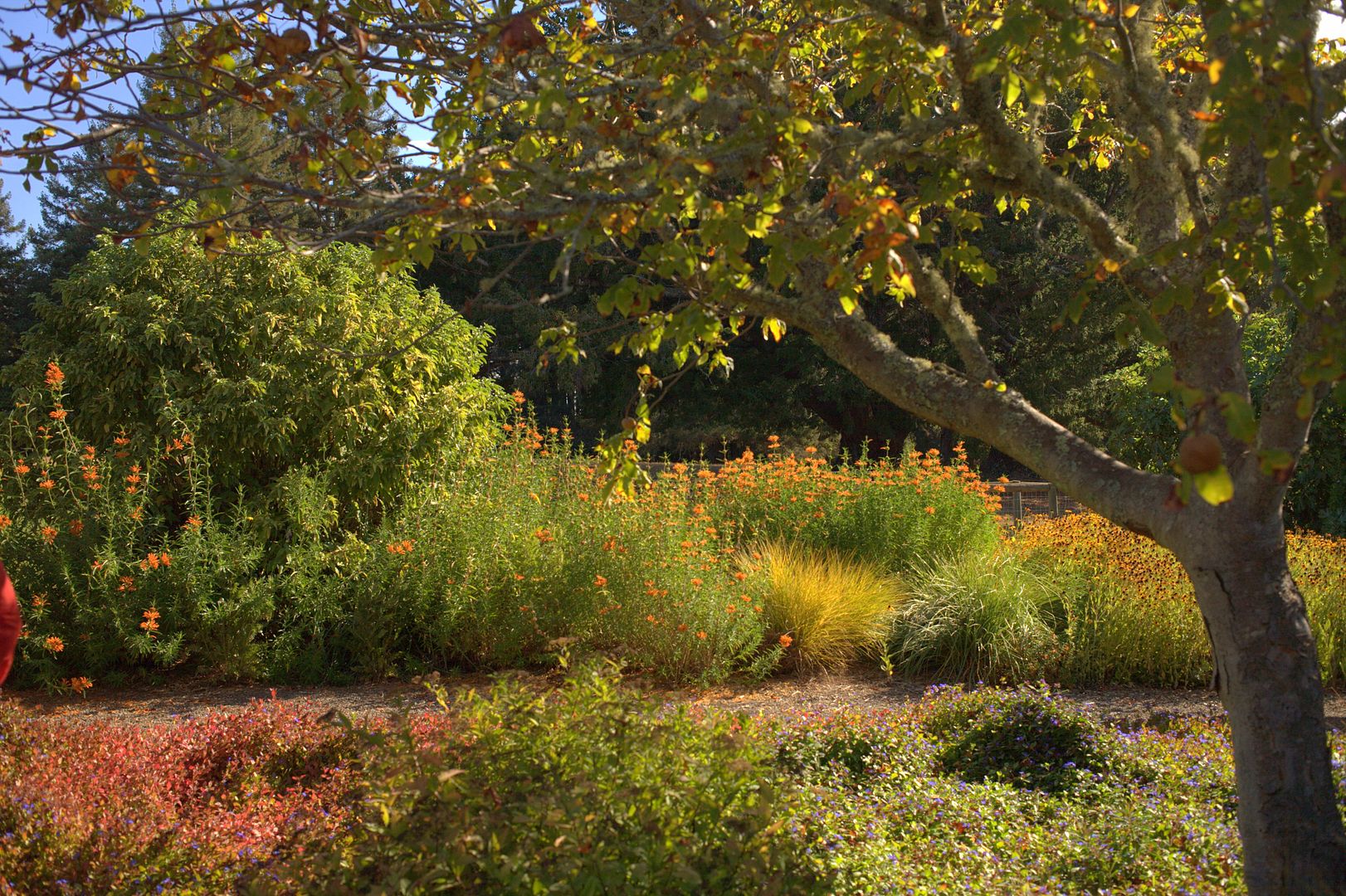
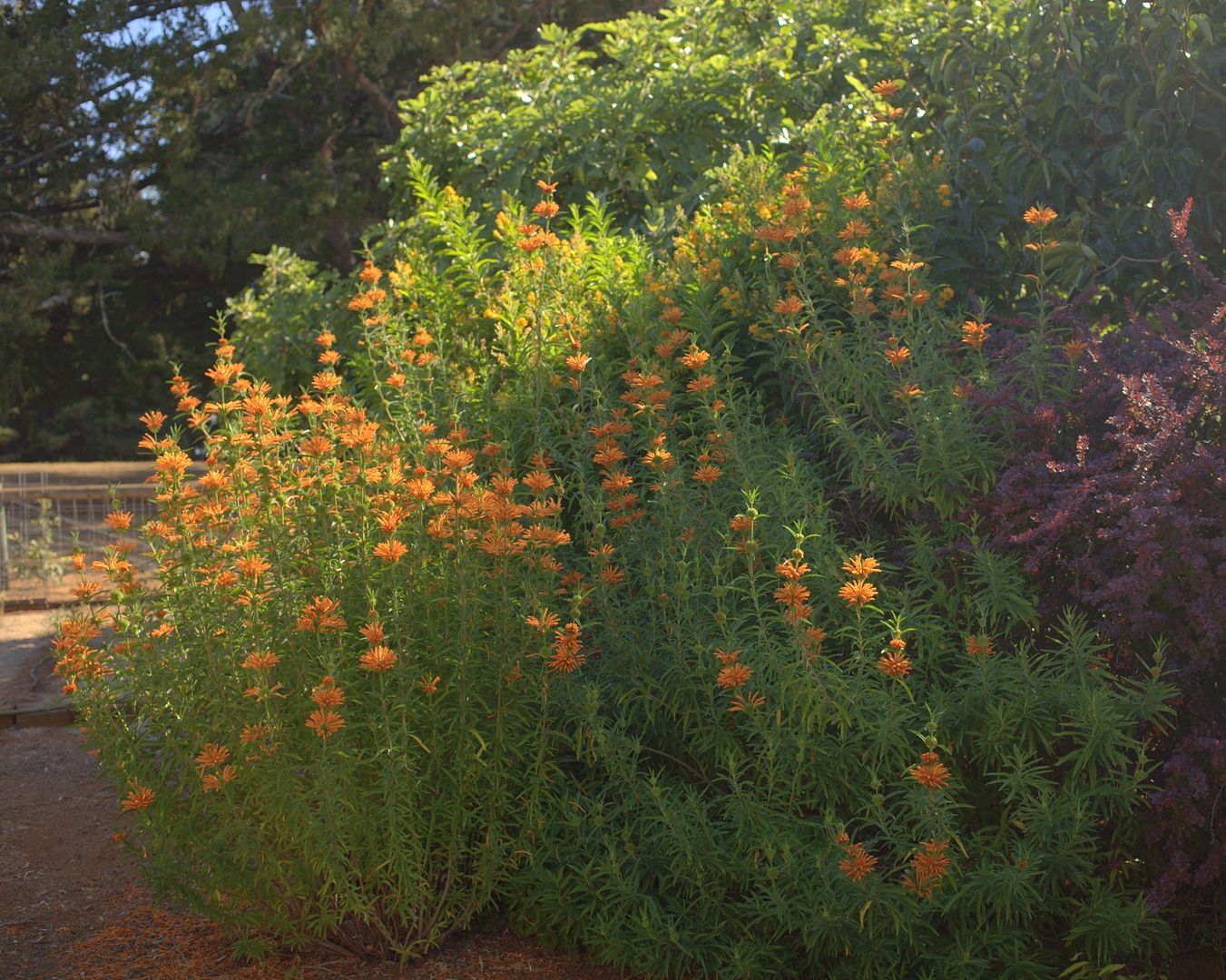
The Lion’s Tail, Leonotis leonurus, was a dazzlingly exotic beast to American Conifer Society members on the tour. I heard languages from all over the world amongst our group excitedly conferring over the Lion’s Tail.

Remember, this is a California garden in September, in a mediterranean climate (theoretically winter wet/summer dry) under water restrictions due to our cursed, ongoing drought.
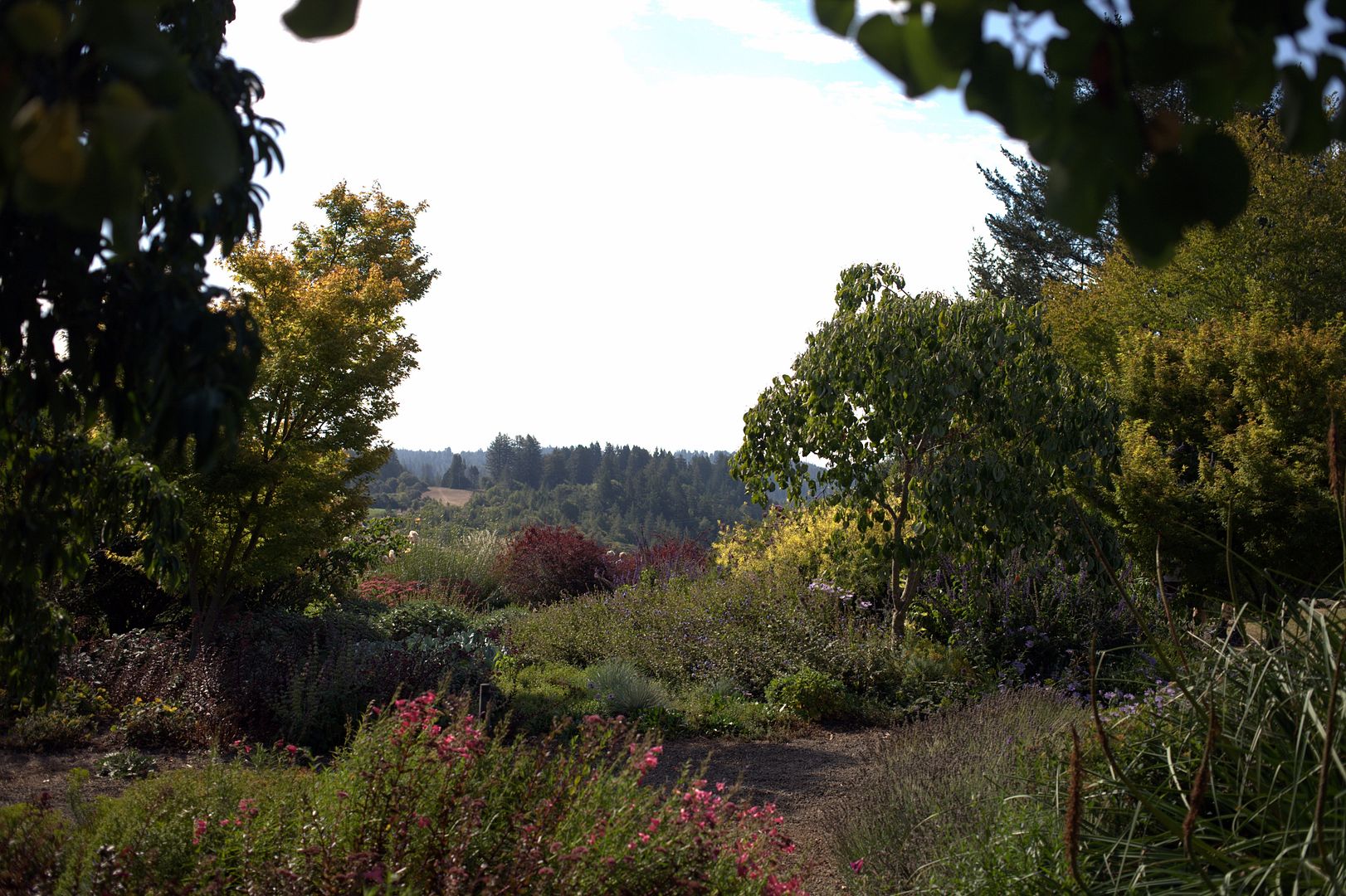
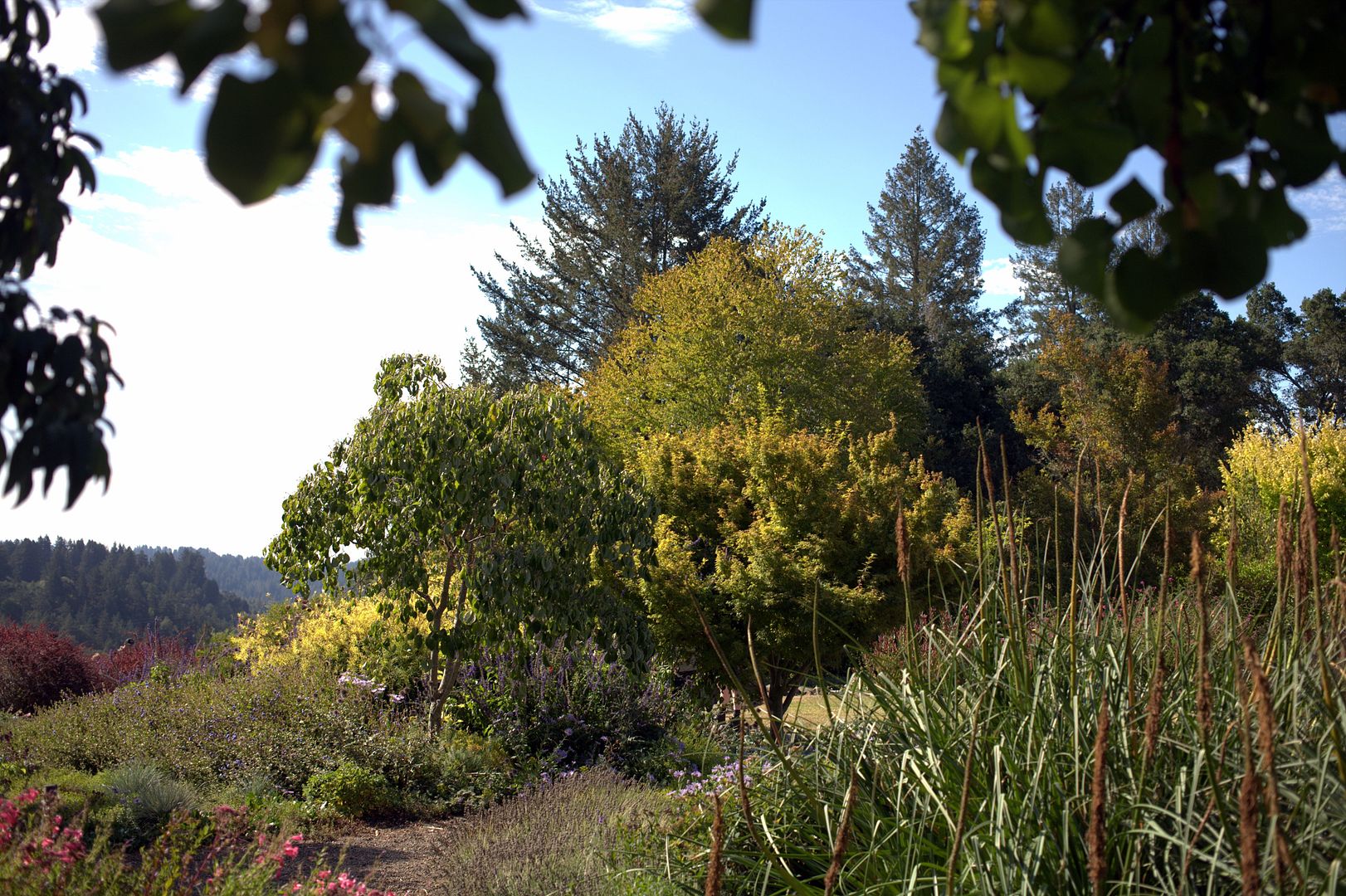
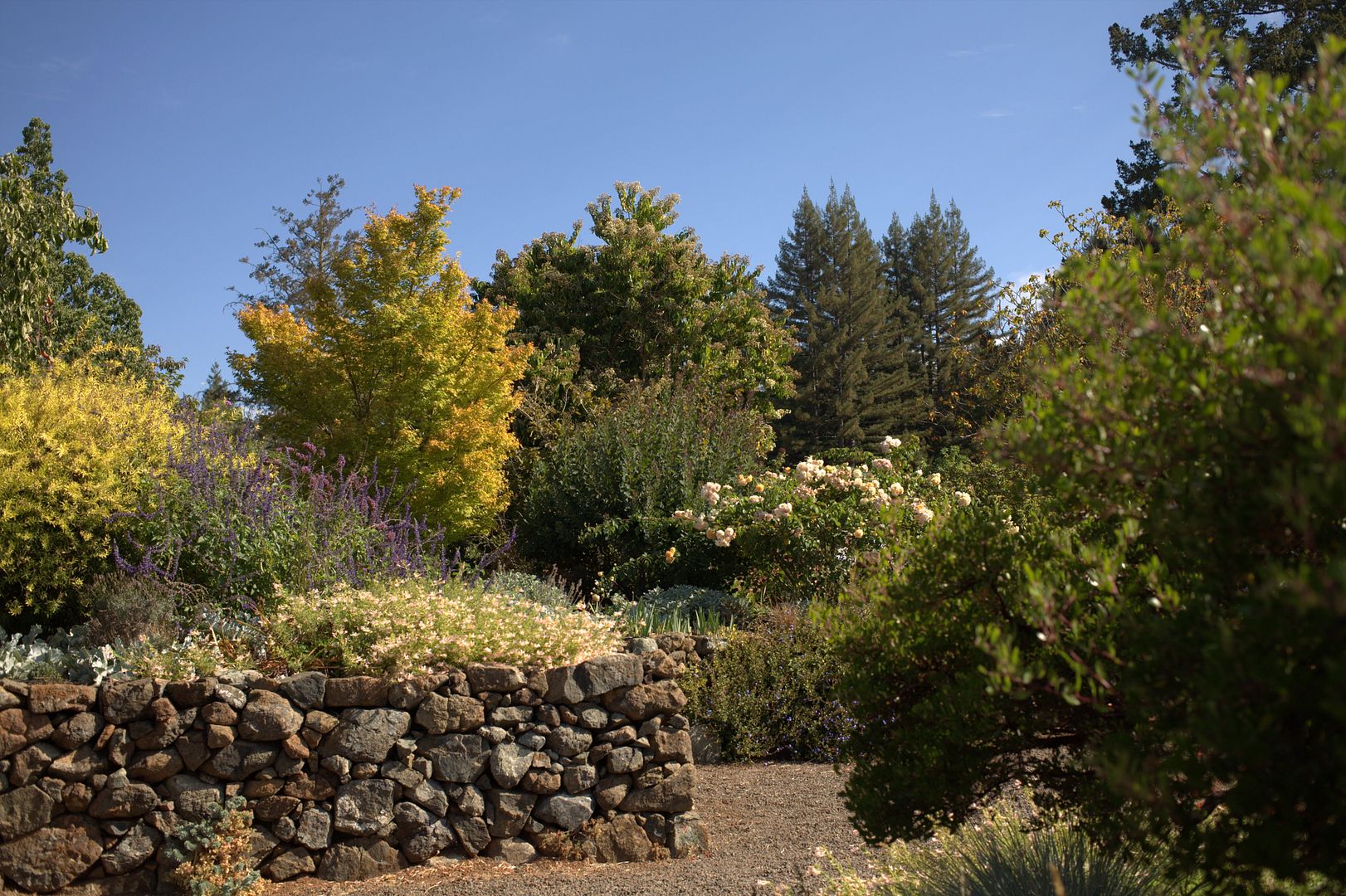
On the path alongside the serpentine wall.

“Their terraced landscape covers two and a half of the 140 rolling acres they bought outside Occidental in 1989. A few miles east of the Pacific Ocean and south of the Russian River, the garden overlooks farm fields, apple orchards, and fir forests.” — (“A Passionate Pursuit”)
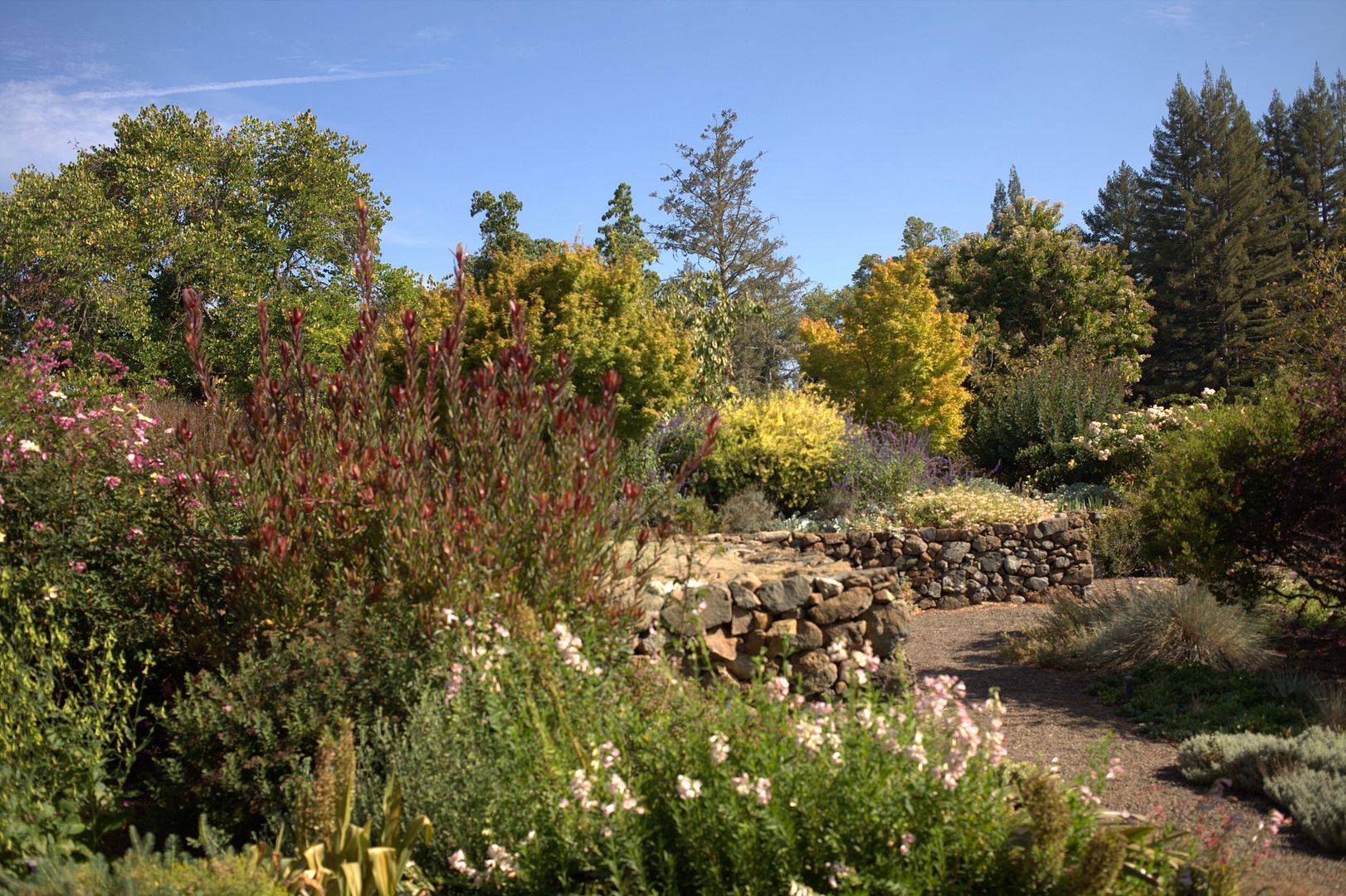

Now on the semi-parched lawn atop the wall.
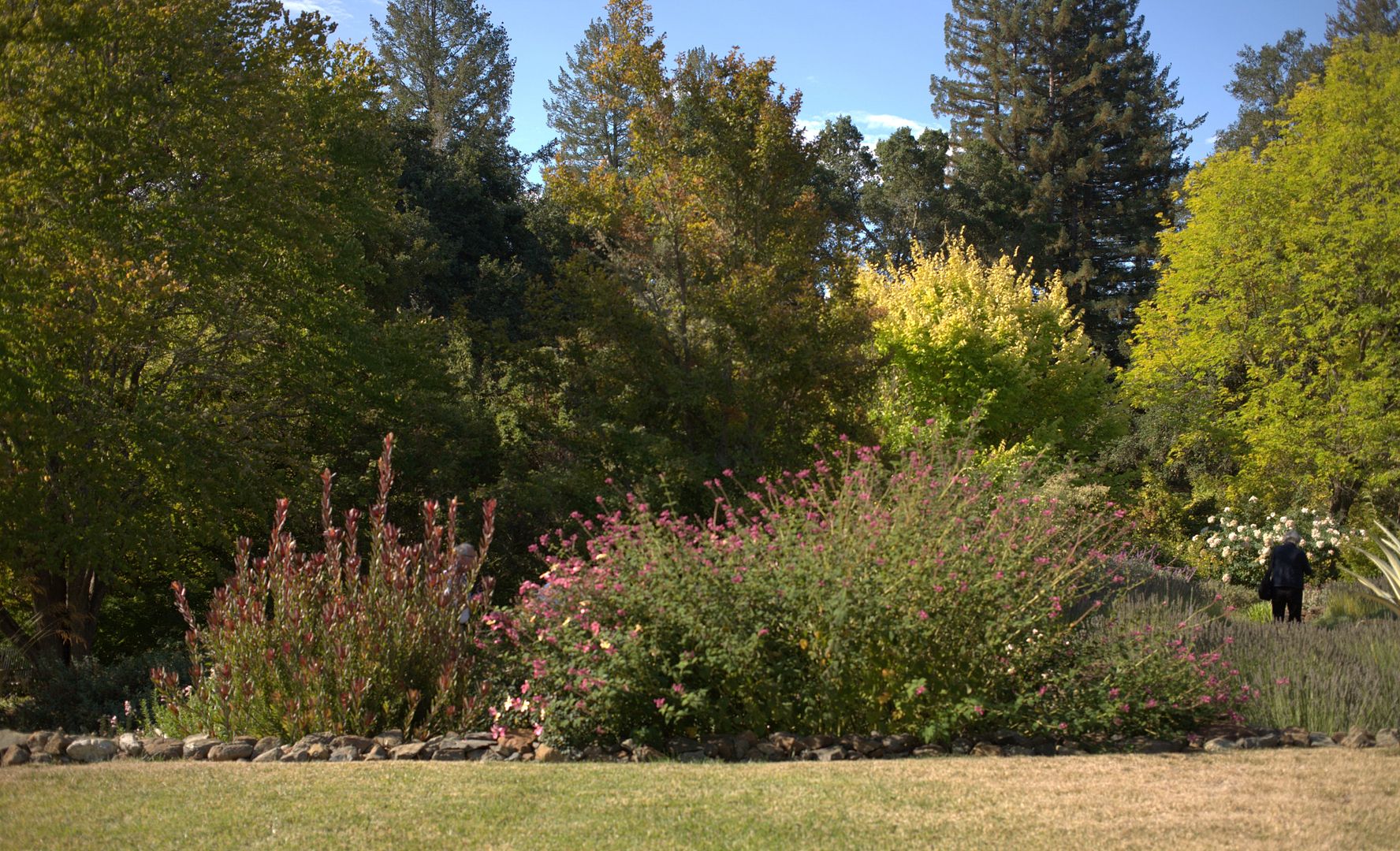
Leucadendron, Rosa mutabilis, and Salvia involucrata.
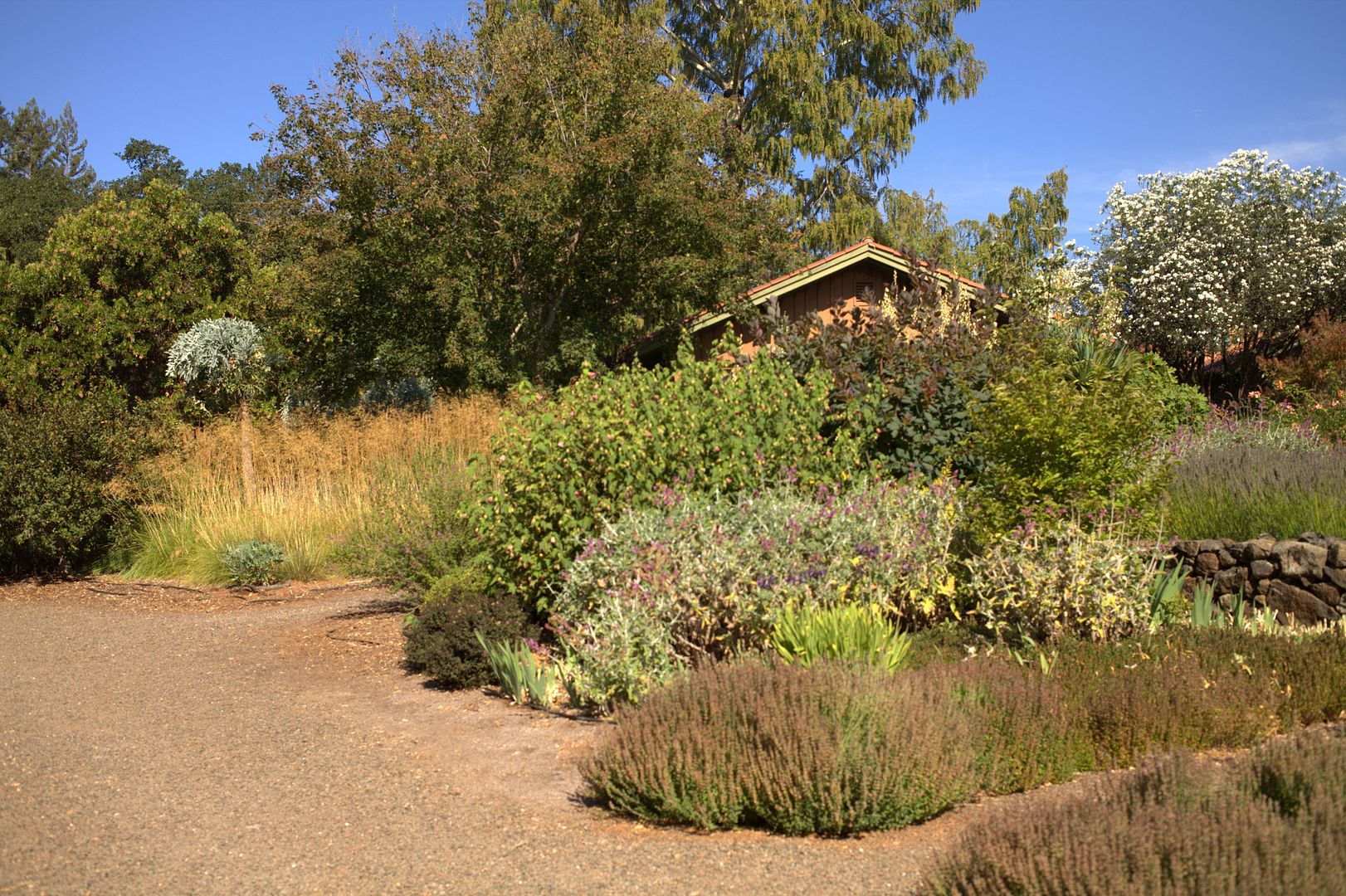
Cussonia paniculata on the left, in the distance behind the veil of Stipa gigantea, white oleander on the right.

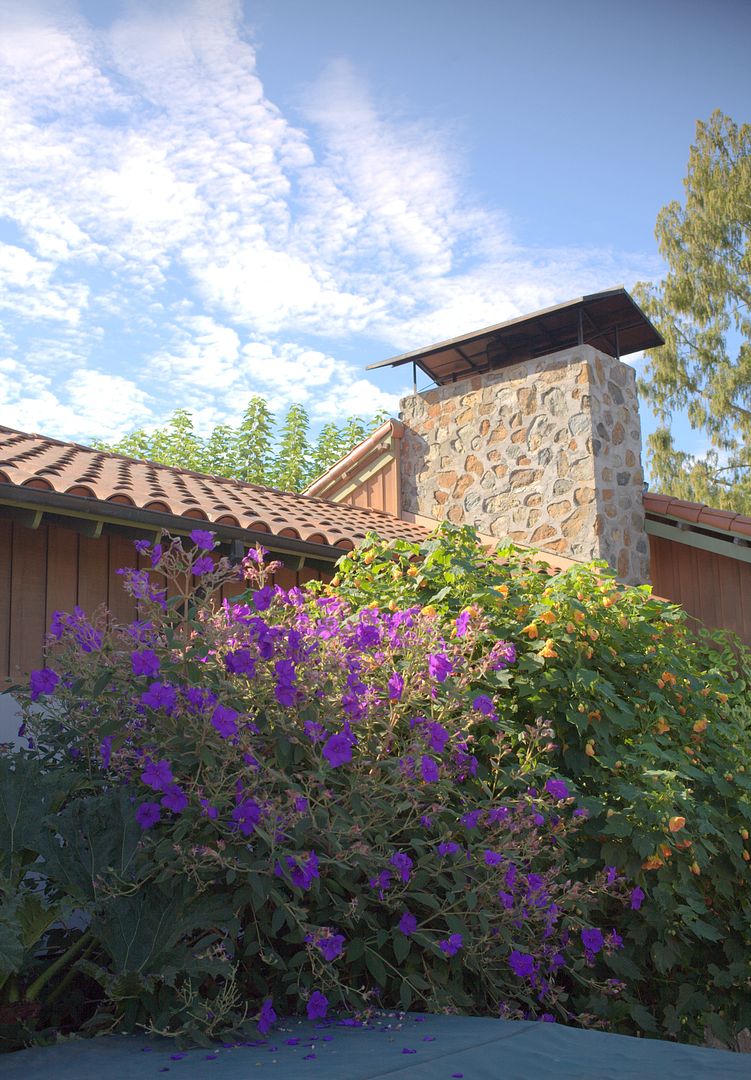
Up against the house, tibouchina and abutilon.
There is a new book out, that I haven’t read yet, entitled “Planting in a Post-Wild World: Designing Plant Communities for Resilient Landscapes,” by Thomas Rainer and Claudia West, that describes this kind of “ecological landscape design.” If you have a nearby garden to study that follows these principles, consider yourself fortunate, because brilliant examples like the Reid garden in Northern California are not often seen. Gardens attached to nurseries, like nearby Western Hills in Occidental, are often good places to study this kind of planting, because detailed plant knowledge is the key.

“…detailed plant knowledge is the key…” — or many years of trial and error. 🙂
So beautiful — I love this sort of garden.
“Detailed plant knowledge is the key” Same quote as Alan attracted me–isn’t it always key, for success?
Magnificent place. More and more, lawns (in California) look weirder and weirder to me.
Oh to have the vast space to layer trees and shrubs like this. It’s a challenge collecting plants in a small space, but there are lessons to be learned from gardens like this, even though a translation into diminutive might be required.
Oh, I really wish I had the space to do the full court press of this kind of design in my back garden. I used some of the same plants, but I just don’t have the space to make this kind of visual impact. I also wish we had a garden like this nearby.
I must get my hands on that book. Beautiful garden — I’ll echo the comment by ks above, and hope for/wonder about translations into diminutive.
@Alan, I really do too. The Portland garden Bella Madrona’s planting had a touch of this.
@Hoov, you really have to know your trees’ eventual height and width and keep the loppers sharp. I sheepishly admit that wide lawn surrounded by flower borders looks very weird to me…
@Kathy, lots of good planting to learn from, but I think smaller gardens make different demands on the house (Laundry shed?) and take different approaches.
@Alison, one of the articles I’ve linked shows a photo of the impressive double deer fencing, and I imagine the raccoons get in freely. Be careful what you wish for!
@Luisa, that book looks interesting and reminds me of Beth Chatto’s philosophy.
I followed your link and had a look at that book – beautiful pictures and designs (that don’t look like they’ve been designed). Might just need to get myself a copy.
I really like your photos 🙂 Congratulation
Thanks for your comment, Francesco, because now I can enjoy your blog!